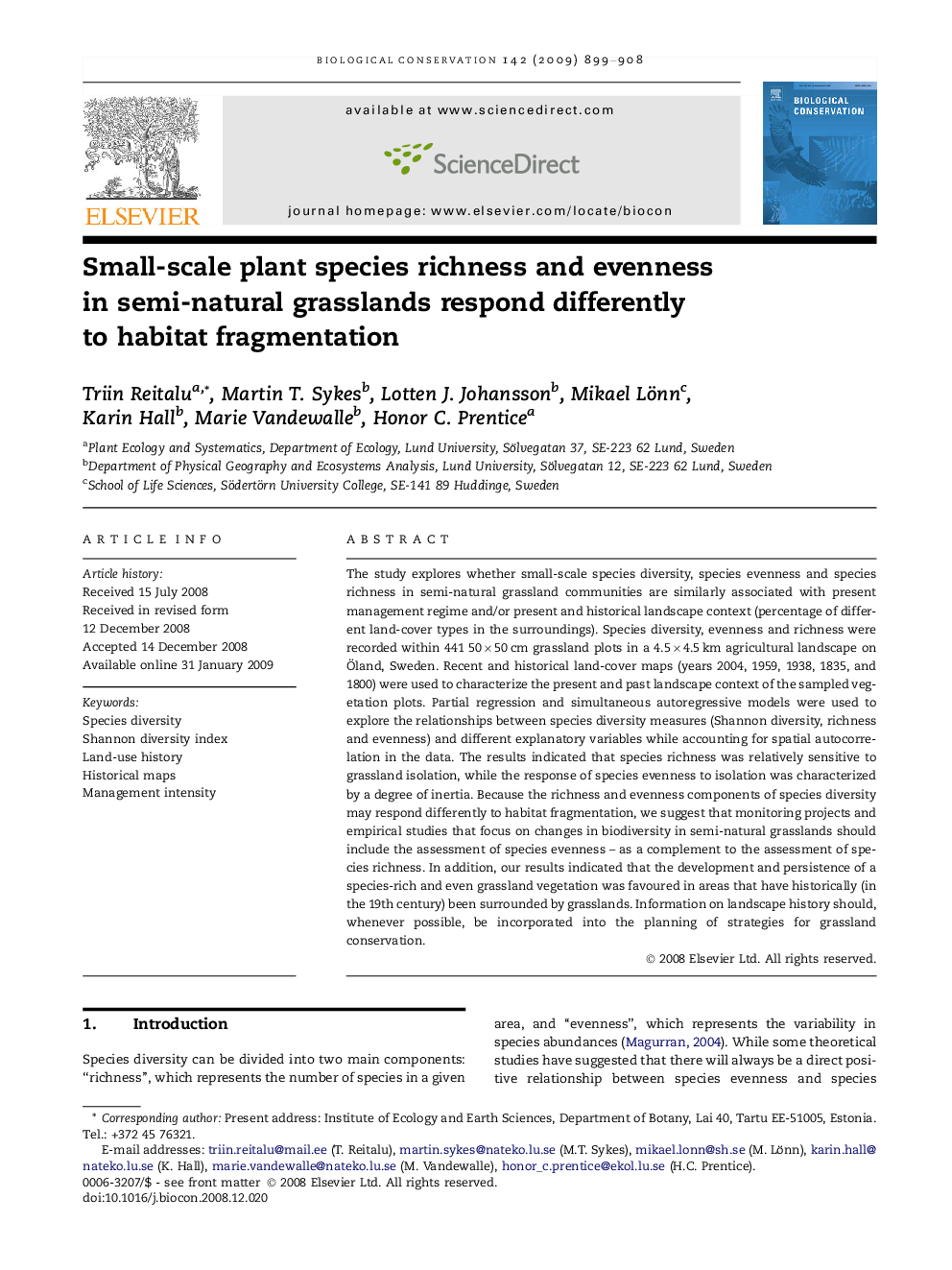| Article ID | Journal | Published Year | Pages | File Type |
|---|---|---|---|---|
| 4386370 | Biological Conservation | 2009 | 10 Pages |
The study explores whether small-scale species diversity, species evenness and species richness in semi-natural grassland communities are similarly associated with present management regime and/or present and historical landscape context (percentage of different land-cover types in the surroundings). Species diversity, evenness and richness were recorded within 441 50 × 50 cm grassland plots in 4.5 × 4.5 km agricultural landscape on Öland, Sweden. Recent and historical land-cover maps (years 2004, 1959, 1938, 1835, and 1800) were used to characterize the present and past landscape context of the sampled vegetation plots. Partial regression and simultaneous autoregressive models were used to explore the relationships between species diversity measures (Shannon diversity, richness and evenness) and different explanatory variables while accounting for spatial autocorrelation in the data. The results indicated that species richness was relatively sensitive to grassland isolation, while the response of species evenness to isolation was characterized by a degree of inertia. Because the richness and evenness components of species diversity may respond differently to habitat fragmentation, we suggest that monitoring projects and empirical studies that focus on changes in biodiversity in semi-natural grasslands should include the assessment of species evenness – as a complement to the assessment of species richness. In addition, our results indicated that the development and persistence of a species-rich and even grassland vegetation was favoured in areas that have historically (in the 19th century) been surrounded by grasslands. Information on landscape history should, whenever possible, be incorporated into the planning of strategies for grassland conservation.
